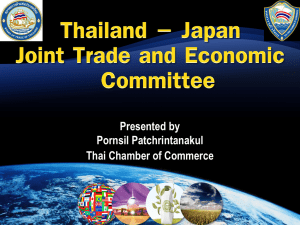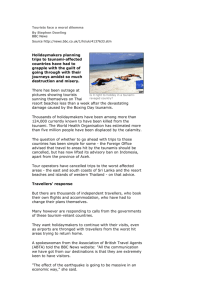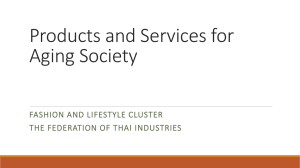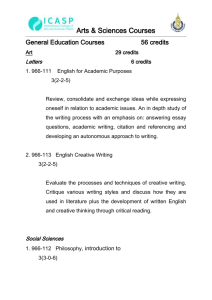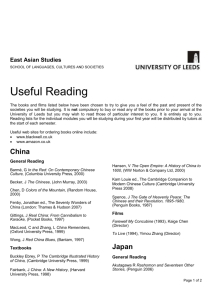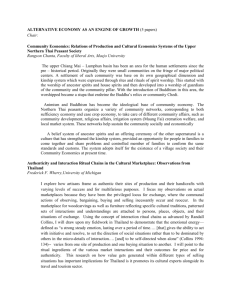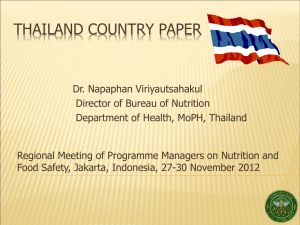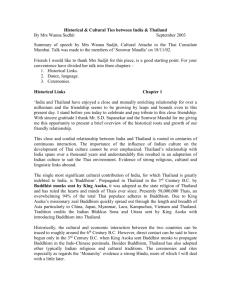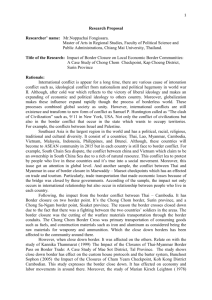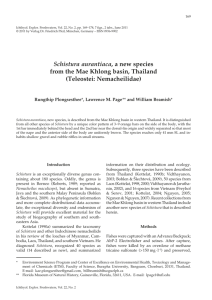Road to Crisis - APAN Community SharePoint
advertisement
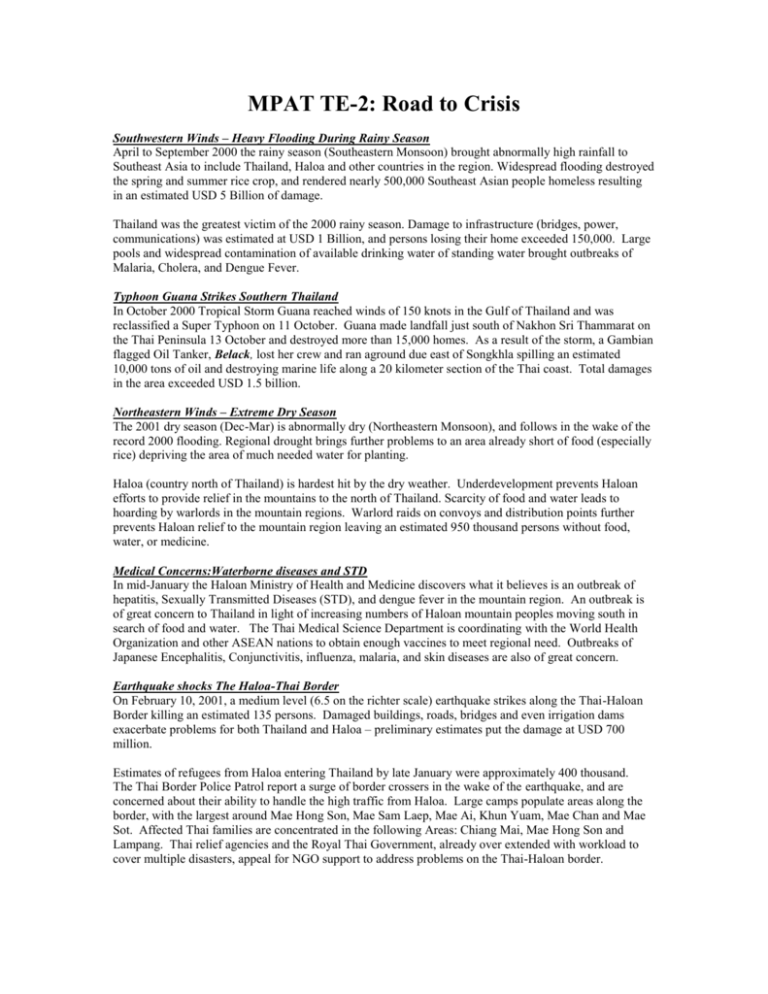
MPAT TE-2: Road to Crisis Southwestern Winds – Heavy Flooding During Rainy Season April to September 2000 the rainy season (Southeastern Monsoon) brought abnormally high rainfall to Southeast Asia to include Thailand, Haloa and other countries in the region. Widespread flooding destroyed the spring and summer rice crop, and rendered nearly 500,000 Southeast Asian people homeless resulting in an estimated USD 5 Billion of damage. Thailand was the greatest victim of the 2000 rainy season. Damage to infrastructure (bridges, power, communications) was estimated at USD 1 Billion, and persons losing their home exceeded 150,000. Large pools and widespread contamination of available drinking water of standing water brought outbreaks of Malaria, Cholera, and Dengue Fever. Typhoon Guana Strikes Southern Thailand In October 2000 Tropical Storm Guana reached winds of 150 knots in the Gulf of Thailand and was reclassified a Super Typhoon on 11 October. Guana made landfall just south of Nakhon Sri Thammarat on the Thai Peninsula 13 October and destroyed more than 15,000 homes. As a result of the storm, a Gambian flagged Oil Tanker, Belack, lost her crew and ran aground due east of Songkhla spilling an estimated 10,000 tons of oil and destroying marine life along a 20 kilometer section of the Thai coast. Total damages in the area exceeded USD 1.5 billion. Northeastern Winds – Extreme Dry Season The 2001 dry season (Dec-Mar) is abnormally dry (Northeastern Monsoon), and follows in the wake of the record 2000 flooding. Regional drought brings further problems to an area already short of food (especially rice) depriving the area of much needed water for planting. Haloa (country north of Thailand) is hardest hit by the dry weather. Underdevelopment prevents Haloan efforts to provide relief in the mountains to the north of Thailand. Scarcity of food and water leads to hoarding by warlords in the mountain regions. Warlord raids on convoys and distribution points further prevents Haloan relief to the mountain region leaving an estimated 950 thousand persons without food, water, or medicine. Medical Concerns:Waterborne diseases and STD In mid-January the Haloan Ministry of Health and Medicine discovers what it believes is an outbreak of hepatitis, Sexually Transmitted Diseases (STD), and dengue fever in the mountain region. An outbreak is of great concern to Thailand in light of increasing numbers of Haloan mountain peoples moving south in search of food and water. The Thai Medical Science Department is coordinating with the World Health Organization and other ASEAN nations to obtain enough vaccines to meet regional need. Outbreaks of Japanese Encephalitis, Conjunctivitis, influenza, malaria, and skin diseases are also of great concern. Earthquake shocks The Haloa-Thai Border On February 10, 2001, a medium level (6.5 on the richter scale) earthquake strikes along the Thai-Haloan Border killing an estimated 135 persons. Damaged buildings, roads, bridges and even irrigation dams exacerbate problems for both Thailand and Haloa – preliminary estimates put the damage at USD 700 million. Estimates of refugees from Haloa entering Thailand by late January were approximately 400 thousand. The Thai Border Police Patrol report a surge of border crossers in the wake of the earthquake, and are concerned about their ability to handle the high traffic from Haloa. Large camps populate areas along the border, with the largest around Mae Hong Son, Mae Sam Laep, Mae Ai, Khun Yuam, Mae Chan and Mae Sot. Affected Thai families are concentrated in the following Areas: Chiang Mai, Mae Hong Son and Lampang. Thai relief agencies and the Royal Thai Government, already over extended with workload to cover multiple disasters, appeal for NGO support to address problems on the Thai-Haloan border.
